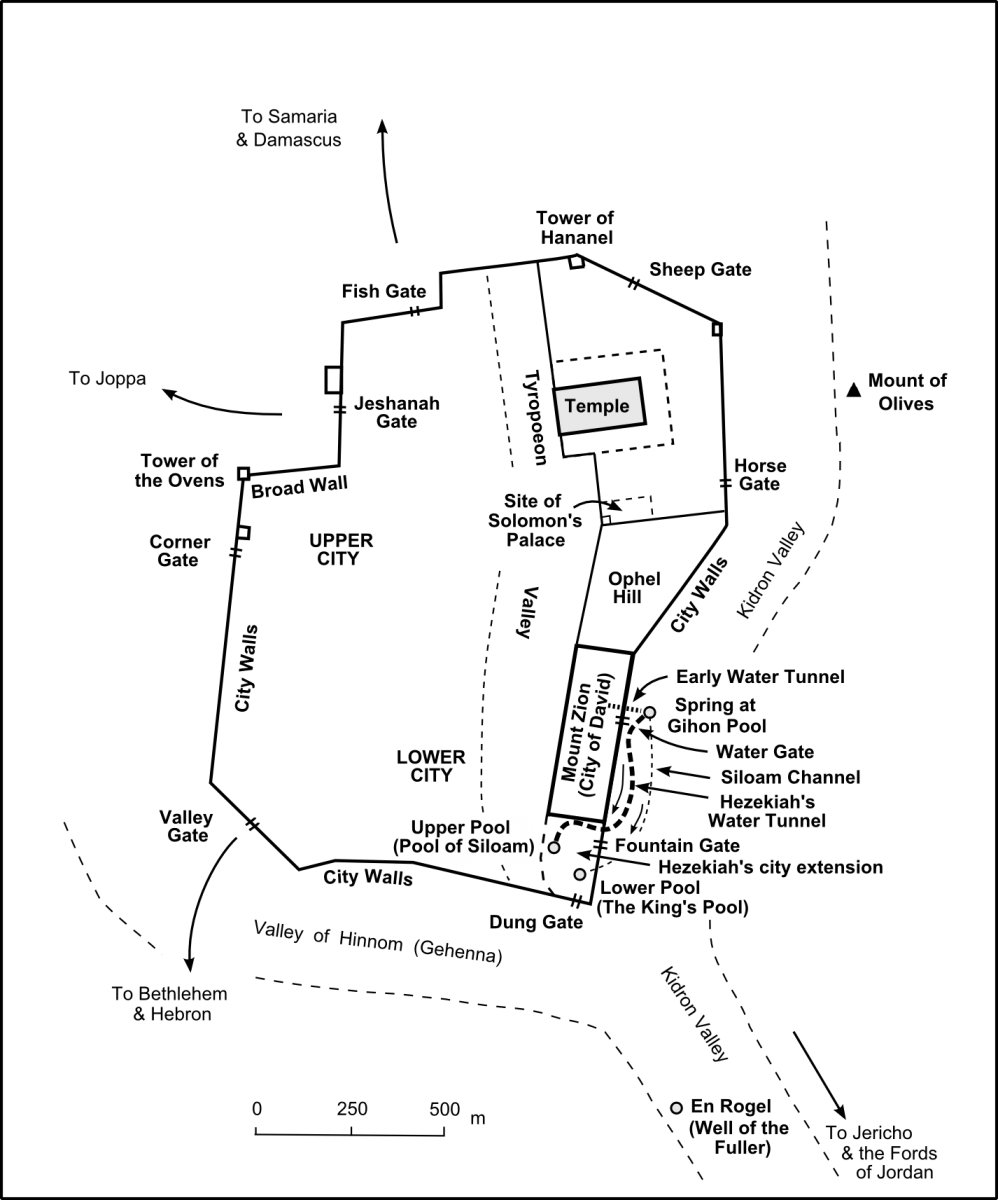8 Nov. Nehemiah inspects the walls of Jerusalem
“I went to Jerusalem and stayed there three days. Then at night I started out with a few men. I had not told anyone what God had caused me to do for Jerusalem. There were no animals with me except the one I was riding.”
“I went out at night through the Valley Gate. I rode towards the Dragon Well and the Rubbish Gate [Dung Gate], inspecting the walls of Jerusalem that had been broken down and the gates that had been destroyed by fire.”
“Then I rode on towards the Fountain Gate and the King’s Pool, but there was not enough room for the animal I was riding to pass through. So I went up the valley at night, inspecting the wall. Finally, I turned and went back in through the Valley Gate.”
“The guards did not know where I had gone or what I was doing. I had not yet said anything to the Jewish people, the priests, the important men, the officers or any of the others who would do the work.”
“Then I said to them, ‘You can see the trouble we have here. Jerusalem is a pile of ruins, and its gates have been burned. Come, let’s rebuild the wall of Jerusalem so we won’t be full of shame any longer.’ I also told them how God had been kind to me and what the king had said to me.”
“Then they answered, ‘Let’s start rebuilding.’ So they began to work hard. But when Sanballat the Horonite, Tobiah the Ammonite officer and Geshem the Arab heard about it, they made fun of us and laughed at us. They said, ‘What are you doing? Are you turning against the king?’”
“But I answered them, ‘The God of Heaven will give us success. We, his servants, will start rebuilding, but you have no share, claim or memorial in Jerusalem.’”
(Nehemiah 2:11-20)

Nehemiah’s first task on returning to Jerusalem was to re-build the city walls in order to protect its inhabitants from constant raids by their enemies.
Nehemiah began by surveying the damage to the city walls at night, starting at the Valley Gate, and proceeding down the Hinnom Valley to the Dung Gate (or ‘Rubbish Gate’). Turning north up the Kidron Valley, he examined the broken-down Fountain Gate near the King’s Pool before returning to the city (see Nehemiah 2:11-15).
Nehemiah then began to organise the re-building of the ruined walls. Sections of wall were allocated to different work parties.
Eliashib, the high priest was put in charge of the group repairing the Sheep Gate and re-building the wall as far as the Tower of Hananel (see Nehemiah 3:1-2). The Fish Gate was rebuilt by the Hassenaah family, while the Jeshanah Gate and the Broad Wall were repaired by men from Gibeon and Mizpah (see Nehemiah 3:3-8). Other families rebuilt the Tower of the Ovens and the section of wall overlooking the Hinnom Valley between the Valley Gate and the Dung Gate (see Nehemiah 3:9-14).
The Fountain Gate, the wall by the Pool of Siloam and the steps leading down from the City of David were rebuilt by the son of the governor of Mizpah. The son of the governor of Beth Zur repaired the wall overlooking the Kidron Valley as far as David’s tomb and the Pool of Gihon (see Nehemiah 3:15-16). Other families completed sections of the wall from the Water Gate as far as the site of Solomon’s Palace on Ophel Hill, while the priests and others reconstructed the wall bordering the Temple Mount, from the Horse Gate to the Sheep Gate (see Nehemiah 3:17-32).
An excavated section of the foundations of Nehemiah’s original seven metre wide Broad Wall can be seen today just to the north of Hurva Square in the Jewish Quarter of the Old City of Jerusalem.
The map shows the layout of the city of Jerusalem in Nehemiah’s time.
You can see a photo of part of Nehemiah’s original wall near the City of David @ https://www.thebiblejourney.org/biblejourney2/35-the-exiles-return-to-judah/a-fourth-group-of-exiles-returns-with-nehemiah/
